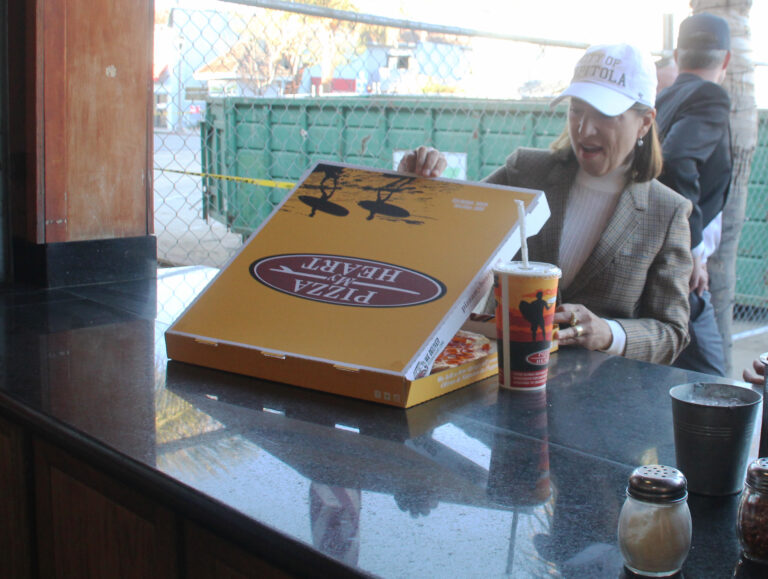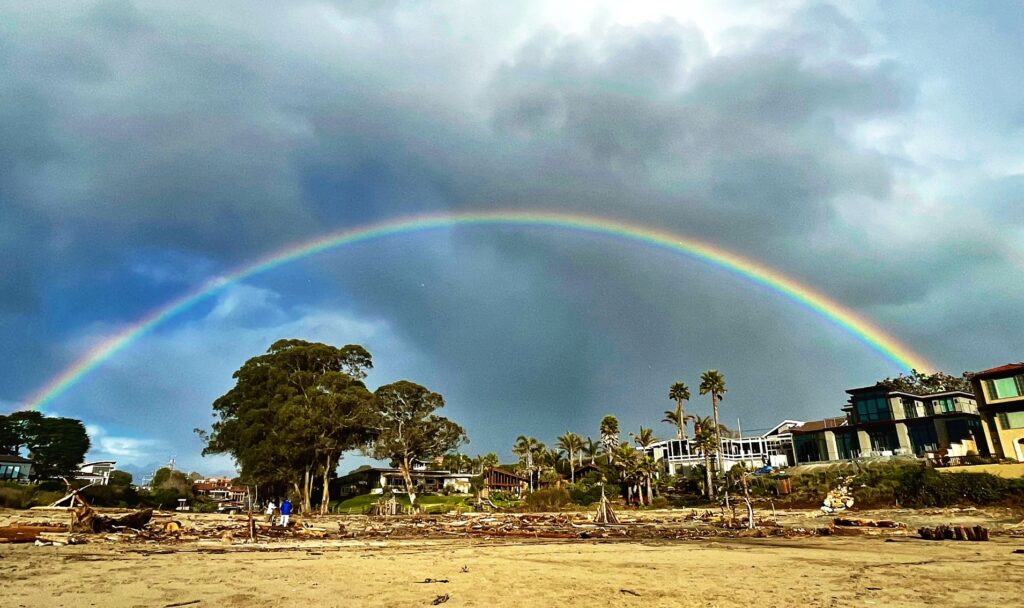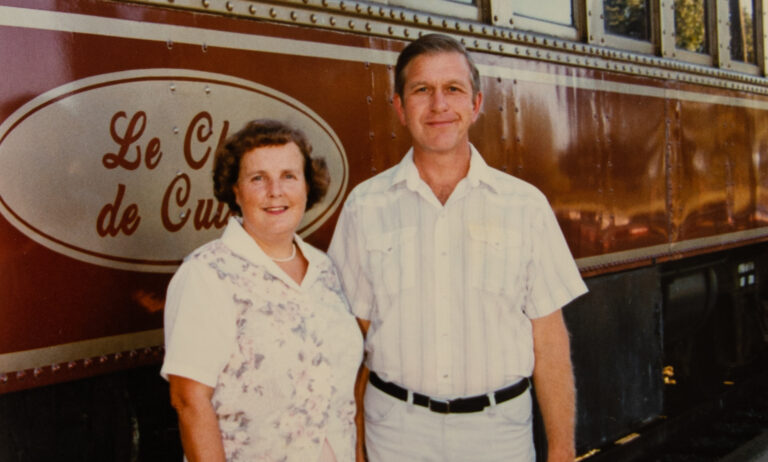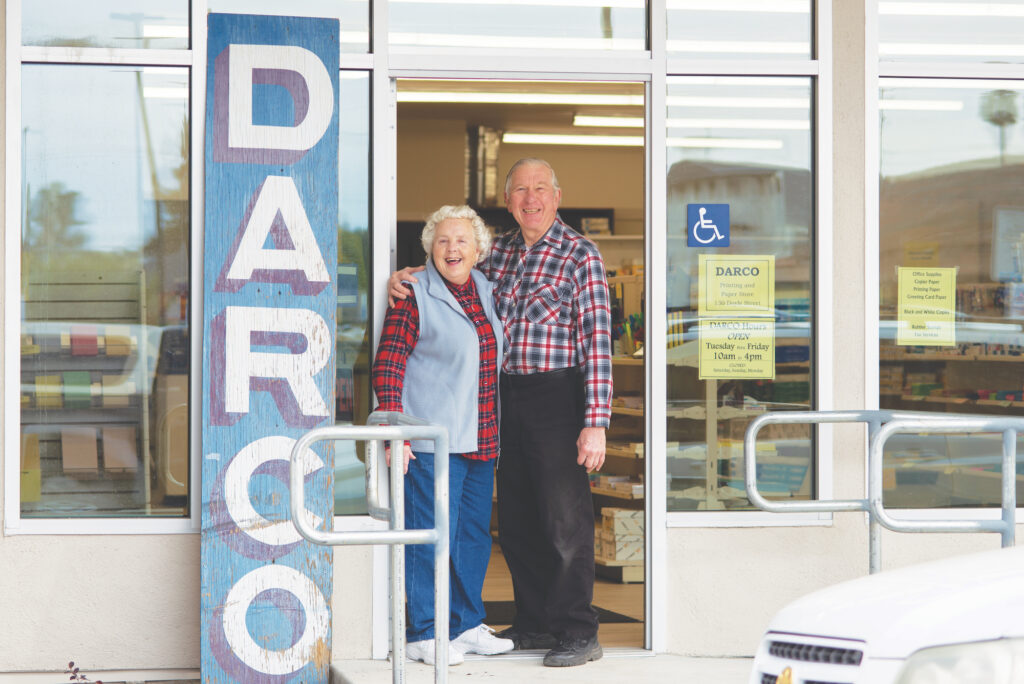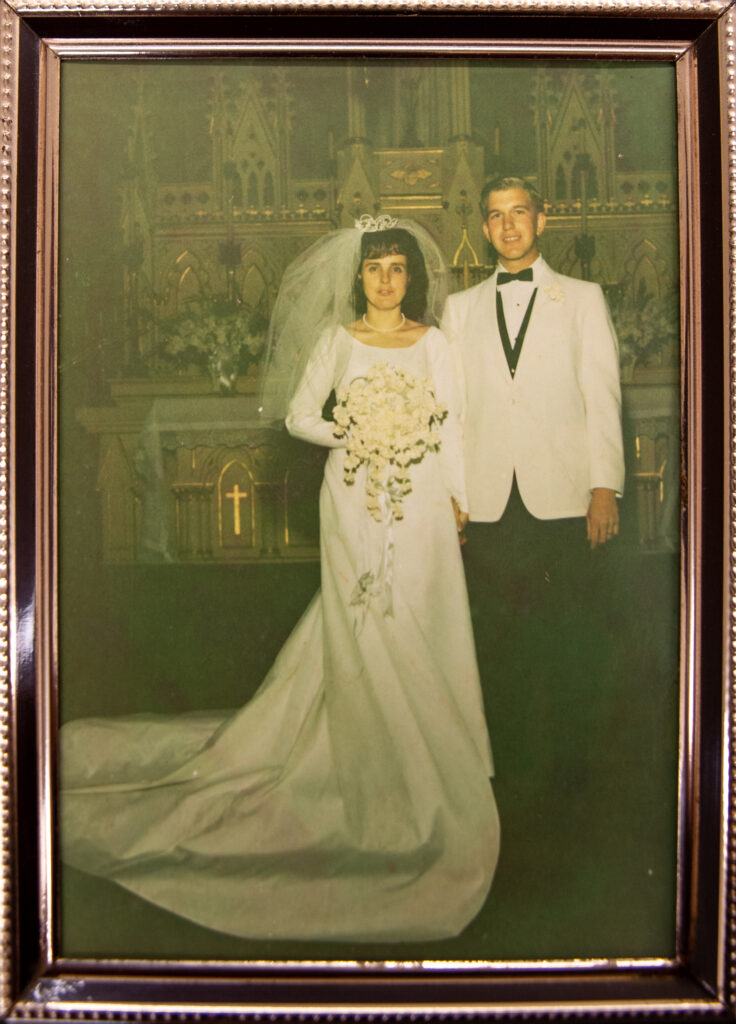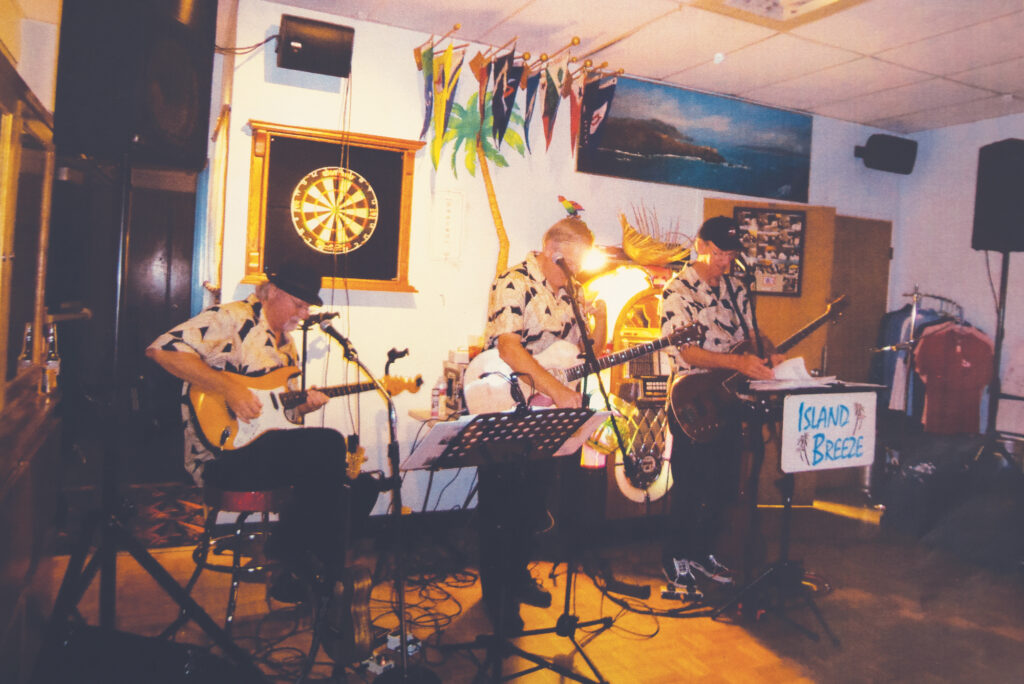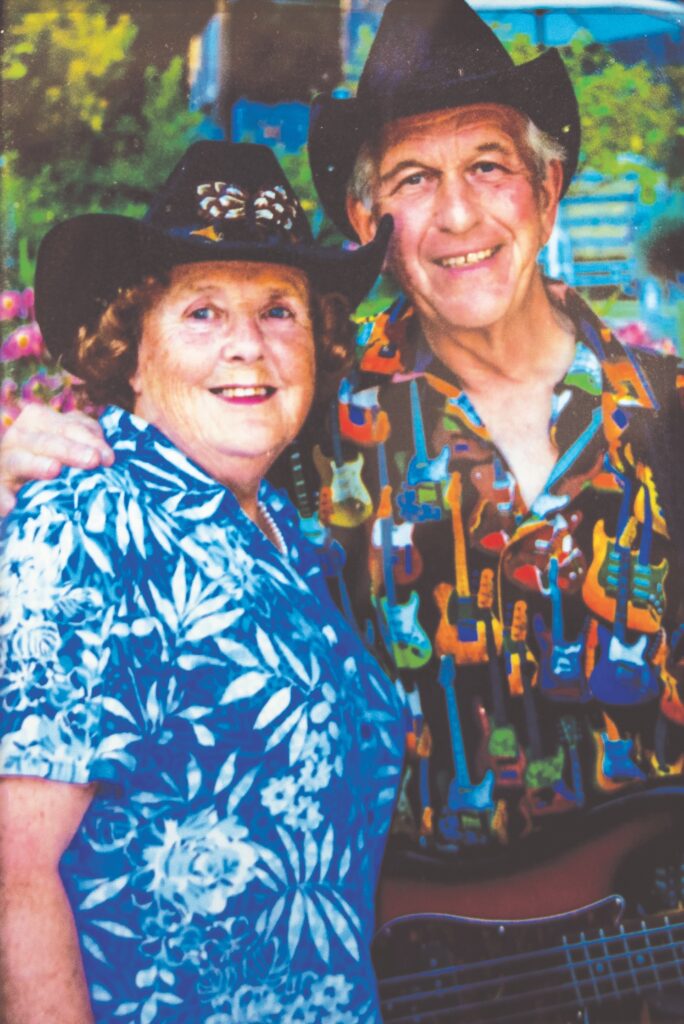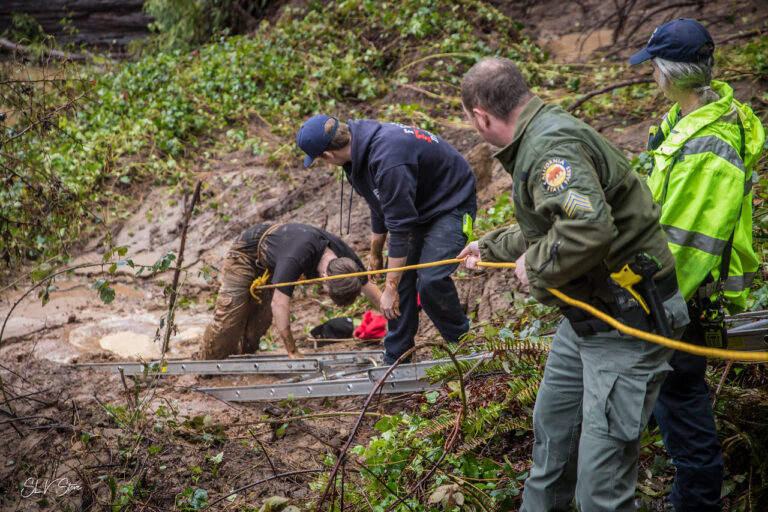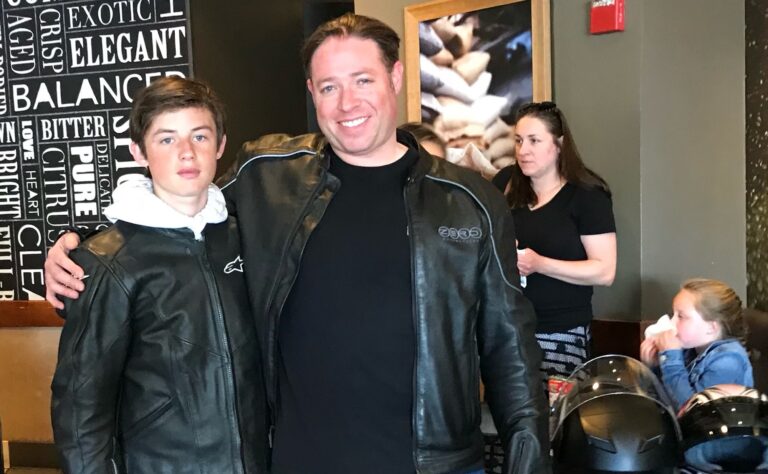Zayante Fire Chief Dan Walters has had an eventful year, and it’s barely started.
Early Jan. 9, wind gusts of 40 mph ripped a root ball containing three trees out of the ground, knocking one into the roof of Station Two, an equipment storage facility on Lompico Road. He got a call from Captain John Amadeo, who was 50 yards away with crews, responding to a mudslide in the heavy rain when the tree hit.
Just hours later, Walters stood inside Station One on East Zayante Road, looked down, and saw water flowing in under the door.
Water rushed inside the station and rose to six inches in ten minutes. It took out the district’s landline phone service, several computers, radios, records in file cabinets, power supplies, two feet of sheetrock in the walls and the floor. No one was hurt, but damages are estimated at $118,000, prompting a GoFundMe for both stations.
“No one ever dreamed that the fire station could flood,” says Chief Walters, who’s usually full of contingency plans.
Walters drove to the station but could not get close due to the number of downed trees and wires, which crews were busy clearing off the road.
So, he requested help, paging the station’s volunteers. Volunteer firefighters from Zayante Fire and the other San Lorenzo Valley districts—Ben Lomond, Boulder Creek and Felton—were already responding to other calls.
Departments utilize every available volunteer in extreme weather. From Dec. 31 until well after the storms subsided, area first responders in the Santa Cruz Mountains have been slammed. Alongside their colleagues from larger city departments, including Scotts Valley and the state fire department CalFire, volunteer departments worked nonstop, responding to downed power lines, structure fires, falling trees and blocked roads.
They rescued people trapped in homes and sometimes entire neighborhoods and performed public services, like teaching residents how to start generators and use sump pumps.
Volunteer fire departments, operating on small budgets and volunteer labor, perform lifesaving and vital services to the community. Doing so much with so little, a volunteer department—especially in the San Lorenzo Valley—just might be the real-life little engine that could.
MOUNTAINSIDE NECESSITY
If it takes grit to live in the Santa Cruz Mountains—where storms, mudslides, wildfires and earthquakes are just some of the hazards—it takes an even more unique character to serve the mountain community as a volunteer firefighter.
Zayante, Ben Lomond, Felton and Boulder Creek are unincorporated communities with populations of around 3,000-7,000. The districts each have what’s known as all-risk fire departments, meaning they respond to a broad spectrum of emergencies. Each district has one or more stations, almost entirely staffed by volunteers. Far from novices, these volunteers are battalion chiefs, firefighters, captains, engineers, EMTs and paramedics.
Looking at the numbers, it’s clear how essential these departments are, especially during natural disasters.
On average, Zayante receives about 250 calls a year: from Jan. 11-25, the station ran 86 calls. Ben Lomond, another district served by volunteer fire departments, averages 450 a year: in January alone, it received 100 calls. Felton Fire ran a whopping 140 calls in the first three weeks of January when they usually average about 50-60 a month.
Volunteers have the same training and do the same work as career firefighters, but with one important caveat: they aren’t paid.
“We come across as very professional, and we wear uniforms,” Felton Fire Chief Bob Gray says. “But these kids are just out there doing their thing just for the betterment of the community.”
Comprising 70 percent of the nation’s firefighters, volunteers have a history in the Santa Cruz Mountain region. In the early 1900s, residents of the logging town Ben Lomond raised funds to buy equipment that volunteers operated.
“They worked out of an old, little shed next to the park hall. They had no engines, and their first engine here was some kind of old chemical wagon that they used to drag along with them to structure fires,” Ben Lomond Fire District Chief Stacie Brownlee explains.
Volunteer departments have since evolved, but the idea remains simple: community members raise funds and mobilize forces to protect where they call home.
But in the past few decades, Santa Cruz County has been growing. As the oceanside destination attracts more people who want to call it home, the mountainside community is also experiencing population growth. Decades ago, volunteer departments were created to service these small towns based around one industry.
SLV Steve, an area retired career firefighter-turned-photographer, says an influx of newcomers in the last decade changed the demographic and focus of volunteer firefighters. The volunteers in each department were made up of families born and raised in the mountains and knew the terrain. They worked in town and didn’t commute.
Steve says that the average volunteer is there to get their ducks in a row to become a career firefighter. For the most part, volunteer stations have leaned into this reality, stressing their free specialized training to attract and retain volunteers.
LIMITED RESOURCES
Many recent transplants don’t realize the departments are all-volunteer.
“Somebody came by last night and said, ‘Why aren’t you guys paid?’ and I go, ‘Paid?’ Number one, the taxpayers couldn’t afford a paid department up here, and number two, during the CZU fire, I had almost sixty volunteers at my station. If this was a paid department, there’s no way I would have had that many volunteers down here to help,” Brownlee says.
Brownlee’s department currently has 29 on-call volunteers. In contrast, Scotts Valley, a city of over 12,000, operates a “career department” of 22 paid, full-time firefighters with benefits. Additionally, instead of volunteer programs, they offer a “paid call firefighter program,” where a small pool of non-benefits employees works on-call and are paid by the call; departments that offer incentives like these use would-be volunteers. As it is becoming easier for recruits to get hired by the career departments, it’s becoming more and more difficult each year to get volunteers, says Gray, the one full-time employee in his station.
Blue- and white-collar communities will pay the costs if recruitment and staffing dips. Community volunteer fire departments are the most cost-effective model, costing the community a quarter of what it costs to run a full-time paid department.
Funding for fire districts comes from property taxes. The San Lorenzo Valley has a median house price of $885,665, whereas the Scotts Valley median is $1.3 million, and in Santa Cruz, $1.6 million. Lower house prices mean lower property taxes. While that may make an area more affordable, it also means less money to fund fire departments.
“It’s a huge value to the community to have a volunteer department,” says Gray. Donations from residents and support for fundraisers, like pancake breakfasts and T-shirt sales, are appreciated. Fundraisers fill gaps left by government funding.
Felton Fire’s budget last year was $900,000—an amount one could easily spend on a single engine. Those funds must be used for equipment, fuel, training, instructors and overhead. Engines are not part of the budget and are expected to last for several years. Contingency funds exist for emergencies only. During the CZU fire, the state agency CalFire made an emergency declaration allowing volunteers to be paid.
Damage to both Zayante stations wasn’t on Chief Walters’ 2023 bingo card and is not covered by the yearly budget or contingency funds. While FEMA and insurance money will arrive, it will take time, and likely won’t cover all of the damage, making community donations crucial to bridge the gap.
IT TAKES A VILLAGE
Gray doesn’t want anyone to think that volunteer departments are unprepared or hanging by a thread. Mutual aid agreements allow county, state and local departments to coordinate who can be where and when to respond to emergencies efficiently. Nearby city departments, CalFire and other agencies support small departments. Chiefs, acting as operating officers, know each other’s capabilities and equipment.
A mud rescue on a San Lorenzo riverbank on Jan. 16 demonstrated mutual aid at its best. Officers from CHP, CalFire and local stations rescued a young man lodged chest deep in quicksand. SLV Steve captured a photo of the victim posing with the agents who saved him, smiling with relief.
California has been leading the charge with mutual aid, using this system since the 1980s, and other states are adopting the model. In a smaller county like Santa Cruz, mutual aid allows specialized teams in each department to serve the entire county, like Ben Lomond’s Swift Water Rescue team.
Brownlee emphasizes the importance of mutual aid for all-volunteer departments. With the average volunteer lasting three years, according to estimates, mutual aid can supplement responder times during natural disasters, but ongoing volunteer recruitment is vital.
“You’re getting on-the-job experience as well as the same training you would get in a fire academy at a college at no cost to the individual,” says Gray.
Not all volunteer firefighters aspire to careers. Sometimes, they’re electricians or work over the hill at big tech jobs like Google, with a wide age range. Regardless of their day job, it’s the draw of helping the community that keeps them coming back.
THE FUTURE
Chief Walters says the volunteers are making do with the “wet dog smell” of Station One until they remove the damaged sheetrock. They ran 10 professional-grade dehumidifiers to soak up the moisture and will stand in the parking lot waiting to respond to calls while contractors repair the building. Since the sun came back out, they are back to more “normal” rings, like auto accidents and structure fires.
Now, says Walters, the focus is the “pain in the district:” many residents are still without power or in damaged homes, trying to get to work in excessive traffic caused by closures. He appreciates the community; although sometimes people have a short fuse in these situations, he’s not seeing it.
Recently Representative Jimmy Panetta, State Senator John Laird and County Supervisor Bruce McPherson visited the station along with PG&E representatives, holding a community hall in the district. They partnered with the station to educate the community on the recovery process. At the event, Walters was heartened to see neighbors coming together in tough times. He says you learn cooperation when you grow up in or move to the San Lorenzo Valley.
Despite the recent storms and long hours, department morale is high.
“This is the kind of stuff that we like to do, as bad as it may sound,” Walters says. “We’re here to make a bad day better for people.”


